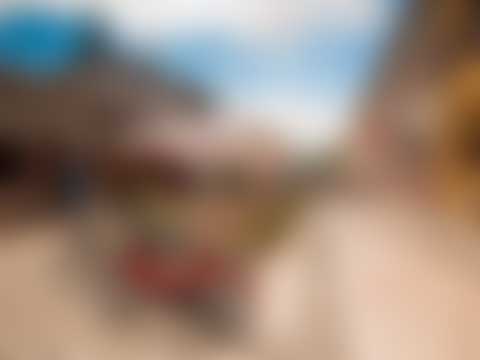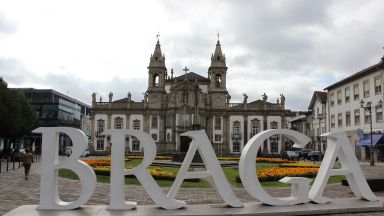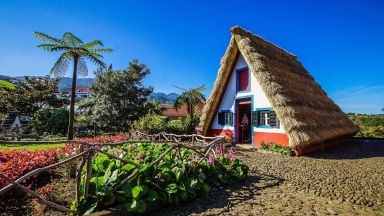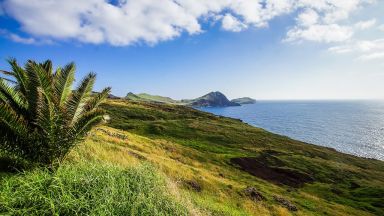Braga: The Complete Guide
Braga is a town steeped in history, with a plethora of churches, palaces, gardens, and fountains visible almost everywhere you turn. The Romans knew it as Bracara Augusta, and it has been inhabited by various conquerors, including the Suevi, Visigoths, and Moors. For centuries, it has served as an archiepiscopal seat and pilgrimage site, with the Visigoths reputed to have abandoned their heresies there. Braga is also a renowned religious capital, hosting Portugal’s most magnificent Semana Santa (Holy Week) observances, featuring torch-lit processions of hooded participants that may evoke images of the KKK.
Despite its rich history, Braga is a contemporary city, bustling with commerce and industry. The city centre, home to the historic core and cathedral, is surrounded by a thriving periphery that encompasses a range of manufacturing industries such as brick-making, soap-making, textiles, smelting, engineering, and leather goods. With a population of 65,000 residents, Braga’s streets are now noisy, filled with increasing numbers of unsightly and uninspired apartment blocks, and subject to traffic congestion on roads that not so long ago only had a few cars and perhaps a donkey or two. Despite being known as Portugal’s most conservative city politically, Braga has a lively nightlife that has earned it the nickname “Lisbon in miniature,” thanks to its youthful population.
Visiting Braga for the first time and wondering what are the top places to see in the city? In this complete guide, I share the best things to do in Braga on the first visit. Top help you plan your trip, I have also included an interactive map and practical tips for visiting!
This website uses affiliate links which earn a small commission at no additional cost to you.
17 Best places to See in Braga
This complete guide to Braga not only tells you about the very best sights and tourist attractions for first-time visitors to the city but also provide insights into a few of our personal favorite things to do.
This is a practical guide to visiting the best places to see in Braga and is filled with tips and info that should answer all your questions!
Braga Cathedral

Location: Braga Cathedral, R. Dom Paio Mendes, Braga, Portugal | Hours: 9.30am-12.30pm & 2.30-6.30pm Apr-Oct, to 5.30pm Nov-Mar | Website | Distance: 0.00km
Visiting Braga Cathedral
Santa Barbara Garden

Location: Jardim de Santa Bárbara, Braga, Portugal | Distance: 0.10km
Visiting Santa Barbara Garden
Episcopal Palace

Location: Igreja de São Vicente, Rua de São Vicente, Braga, Portugal | Distance: 0.10km
Visiting Episcopal Palace
Pius XII & Medina Museum

Location: Museu Pio XII, Largo de Santiago, Braga, Portugal | Hours: From Tuesday to Saturday, from 9:30 a.m. to 12:30 p.m. and 2:30 to 6 p.m. The Museum is closed on Mondays. As well as on 25 December, 1 January and Easter Sunday. | Price: Medina Gallery visit: 2€ Medieval Tower visit: 2€ Entire Museum visit: 4€ | Website | Distance: 0.20km
Visiting Pius XII & Medina Museum
Arco da Porta Nova

Location: Arco da Porta Nova, Rua Dom Diogo de Sousa, Braga, Portugal | Hours: 24 hours | Distance: 0.20km
Visiting Arco da Porta Nova
Torre de Menagem

Location: Torre de Menagem, Rua do Castelo, Braga, Portugal | Distance: 0.20km
Visiting Torre de Menagem
Biscainhos Museum

Location: Biscainhos Museum, Rua dos Biscaínhos, Braga, Portugal | Hours: 10am-12.30pm & 2-5.30pm Tue-Sun | Price: adult/student €2/1, first Sun of the month free | Distance: 0.30km
Visiting Biscainhos Museum
Fonte do Ídolo

Location: Fonte do Ídolo, Rua do Raio, Braga, Portugal | Hours: 9.30am-1pm & 2-5.30pm Mon-Fri, 11am-5.30pm Sat | Distance: 0.40km
Visiting Fonte do Ídolo
Praça da República (Braga)

Location: Praça da República, Braga, Portugal | Distance: 0.40km
Visiting Praça da República (Braga)
Palácio do Raio

Location: Palácio do Raio, Braga Norte, Braga, Portugal | Hours: Museum: 10am-1pm & 2.30-6.30pm Tue-Sat | Website | Distance: 0.40km
Visiting Palácio do Raio
Termas Romanas do Alto da Cividade

Location: Termas Romanas do Alto da Cividade, Rua Doutor Rocha Peixoto, Braga, Portugal | Hours: 9.30am-1pm & 2-5.30pm Mon-Fri, 11am-5.30pm Sat | Price: adult/student €1.85/0.95 | Distance: 0.50km
Visiting Termas Romanas do Alto da Cividade
Museu D. Diogo de Sousa

Location: Museu de Arqueologia D. Diogo de Sousa, Rua dos Bombeiros Voluntários, Braga, Portugal | Hours: 9.30am-6pm Tue-Sun Jun–mid-Sep, to 5.30pm mid-Sep–May | Price: adult/student €3/1.50, Sun free | Website | Distance: 0.50km
Visiting Museu D. Diogo de Sousa
Sanctuary of Bom Jesus do Monte in Braga

Location: Bom Jesus do Monte - Tenões 4700 Braga | Hours: Church: Summer 8 AM – 7 PM, Winter 9 AM – 6 PM. | Website | Distance: 4.10km
Visiting Sanctuary of Bom Jesus do Monte in Braga
Monastery of São Martinho de Tibães

Location: Monastery of São Martinho de Tibães, Rua do Mosteiro, Mire de Tibães, Portugal | Distance: 4.40km
Visiting Monastery of São Martinho de Tibães
Sanctuary of Our Lady of Sameiro

Location: Sanctuary of Our Lady of Sameiro, Avenida Nossa Senhora do Sameiro, Braga, Portugal | Hours: Winter, Monday through Saturday from 7:30 am to 5:30 pm and Sunday from 6:30 am to 5:30 pm Summer, Monday through Saturday from 7:30 am to 7 pm and Sunday from 6:30 am to 7 pm. | Distance: 4.80km
Visiting Sanctuary of Our Lady of Sameiro
Citânia de Briteiros

Location: Citânia de Briteiros, Briteiros, Portugal | Hours: 9am-6pm Apr-Sep, to 5pm Oct-Mar | Price: adult/child incl museum €3/1.50 | Website | Distance: 9.60km
Visiting Citânia de Briteiros
Capela de São Frutuoso (Braga)

Location: Capela de São Frutuoso, Braga, Portugal | Distance: 16.90km
Visiting Capela de São Frutuoso (Braga)


